Influence of NaCl Freeze Thaw Cycles and Cyclic Loading on the Mechanical Performance and Permeability of Sulphoaluminate Cement Reactive Powder Concrete
Abstract
:1. Introduction
2. Experimental Schemes
2.1. Raw Materials and Mixing Proportion
2.2. Measurement Methods
3. Results and Discussion
3.1. Mechanical Strength
3.2. Mass Loss with Freeze–Thaw Cycles
3.3. Variation of Mechanical Performance during Freeze-Thaw Cycles
3.4. Chloride Migration Coefficient during Freeze–Thaw Cycles
4. Conclusions
Author Contributions
Funding
Conflicts of Interest
References
- Rajasekar, A.; Arunachalam, K.; Kottaisamy, M. Durability of ultra-high strength concrete with waste granite sand as partial substitute for aggregate. J. Comput. Theor. Nanosci. 2018, 15, 446–452. [Google Scholar] [CrossRef]
- Dong, S.; Dong, X.; Ashour, A.; Han, B.; Ou, J. Fracture and self-sensing characteristics of super-fne stainless wire reinforced reactive powder concrete. Cem. Concr. Compos. 2020, 105, 103427. [Google Scholar] [CrossRef]
- Wen, S.; Chung, D.D.L. A comparative study of steel-and carbon-fibre cement as piezoresistive strain sensors. Adv. Cem. Res. 2003, 15, 119–128. [Google Scholar] [CrossRef]
- Xu, L.; Liu, S.; Li, N.; Peng, Y.; Wu, K.; Wang, P. Retardation effect of elevated temperature on the setting of calcium sulfoaluminate cement clinker. Constr. Build. Mater. 2018, 178, 112–119. [Google Scholar] [CrossRef]
- Wang, H.; Gao, X.; Liu, J.; Ren, M.; Lu, A. Multi-functional properties of carbon nanofiber reinforced reactive powder concrete. Constr. Build. Mater. 2018, 187, 699–707. [Google Scholar] [CrossRef]
- Dong, S.; Han, B.; Ou, J.; Li, Z.; Han, L.; Yu, X. Electrically conductive behaviors and mechanisms of short-cut super-fine stainless wire reinforced reactive powder concrete. Cem. Concr. Compos. 2016, 72, 48–65. [Google Scholar] [CrossRef] [Green Version]
- Huang, H.; Gao, X.; Li, L.; Wang, H. Improvement effect of steel fiber orientation control on mechanical performance of UHPC. Constr. Build. Mater. 2018, 188, 709–721. [Google Scholar] [CrossRef]
- Nematollahzade, M.; Tajadini, A.; Afshoon, I.; Aslani, F. Influence of different curing conditions and water to cement ratio on properties of self-compacting concretes. Constr. Build. Mater. 2020, 237, 117570. [Google Scholar] [CrossRef]
- Feng, H.; Chen, G.; Hadi, M.N.; Sheikh, M.N.; Zhou, B. Mechanical behaviour of micro-fine steel fibre reinforced sulphoaluminate cement composite. Constr. Build. Mater. 2018, 170, 91–100. [Google Scholar] [CrossRef] [Green Version]
- Mohd, S.; Jagdish, P.; Amjad, M. Effect of GGBFS on time dependent compressive strength of concrete. Constr. Build. Mater. 2010, 24, 1469–1478. [Google Scholar]
- Sajedi, F.; Razak, H. Effects of curing regimes and cement fineness on the compressive strength of ordinary Portland cement mortars. Constr. Build. Mater. 2011, 25, 2036–2045. [Google Scholar] [CrossRef] [Green Version]
- Singh, M.; Kapur, P.C.; Pradip, P. Preparation of calcium sulphoaluminate cement using fertiliser plant wastes. J. Hazard. Mater. 2008, 157, 106–113. [Google Scholar] [CrossRef] [PubMed]
- Chen, P.; Ma, B.; Tan, H.; Liu, X.; Zhang, T.; Li, C.; Yang, Q.; Luo, Z. Utilization of barium slag to improve chloride-binding ability of cement-based material. J. Clean. Prod. 2020, 124612. [Google Scholar] [CrossRef]
- Liu, Q.F.; Iqbal, M.F.; Yang, J.; Lu, X.Y.; Zhang, P.; Rauf, M. Prediction of chloride diffusivity in concrete using artificial neural network: Modelling and performance evaluation. Constr. Build. Mater. 2020, 266, 12108. [Google Scholar]
- Mao, L.X.; Hu, Z.; Xia, J.; Feng, G.L.; Azim, I.; Yang, J.; Liu, Q.F. Multi-phase modelling of electrochemical rehabilitation for ASR and chloride affected concrete composites. Compos. Struct. 2019, 207, 176–189. [Google Scholar] [CrossRef]
- Liu, Q.F.; Feng, G.L.; Xia, J.; Yang, J.; Li, L.Y. Ionic transport features in concrete composites containing various shaped aggregates: A numerical study. Compos. Struct. 2018, 183, 371–380. [Google Scholar] [CrossRef] [Green Version]
- Wang, H.; Zhang, A.; Zhang, L.; Liu, J.; Han, Y.; Shu, H.; Wang, J. Study on the influence of compound rust inhibitor on corrosion of steel bars in chloride concrete by electrical parameters. Constr. Build. Mater. 2020, 262, 120763. [Google Scholar] [CrossRef]
- GB175-2007. Common Portland Cement; China Standard Press: Beijing, China, 2007. (In Chinese) [Google Scholar]
- GB/T21236-2007. Silica Fume from Electric-Furnace; China Standard Press: Beijing, China, 2007. (In Chinese) [Google Scholar]
- GB/T18046-2008. Ground Granulated Blast Furnace Slag Used for Cement and Concrete; China Standard Press: Beijing, China, 2007. (In Chinese) [Google Scholar]
- GB/T17671-1999. Method of Testing Cements-Determination of Strength; China Standard Press: Beijing, China, 1999. (In Chinese) [Google Scholar]
- GB/T 50082-2009. Standard for Test Method of Long-Term Performance and Durability of Ordinary Concrete; China Standard Press: Beijing, China, 2009. (In Chinese) [Google Scholar]
- Ma, B.; Li, H.; Mei, J.; Li, X. Influence of nano-SiO2 addition on properties of sulphoaluminate cement based material. J. Wuhan Univ. Technol.-Mater. Sci. Ed. 2017, 32, 106–112. [Google Scholar] [CrossRef]
- Cai, G.; Zhao, J. Application of sulphoaluminate cement to repair deteriorated concrete members in chloride ion rich environment-A basic experimental investigation of durability properties. KSCE J. Civ. Eng. 2016, 20, 2832–2841. [Google Scholar] [CrossRef] [Green Version]
- Shi, X.; Fay, L.; Peterson, M.; Yang, Z. Freeze-thaw damage and chemical change of a portland cement concrete in the presence of diluted deicers. Mater. Struct. 2010, 43, 933–946. [Google Scholar] [CrossRef]
- Ding, Y.; Huang, Y.; Zhang, Y.; Jalali, S.; Aguiar, J.B. Self-monitoring of freeze-thaw damage using triphasic electric conductive concrete. Constr. Build. Mater. 2015, 101, 440–446. [Google Scholar] [CrossRef] [Green Version]
- Wang, Z.; Zeng, Q.; Wang, L.; Yao, Y.; Li, K. Characterizing blended cement pastes under cyclic freeze-thaw actions by electrical resistivity. Constr. Build. Mater. 2013, 44, 477–486. [Google Scholar] [CrossRef]
- Wang, H.; Gao, X.; Liu, J. Effects of salt freeze-thaw cycles and cyclic loading on the piezoresistive properties of carbon nanofibers mortar. Constr. Build. Mater. 2018, 177, 192–201. [Google Scholar] [CrossRef]


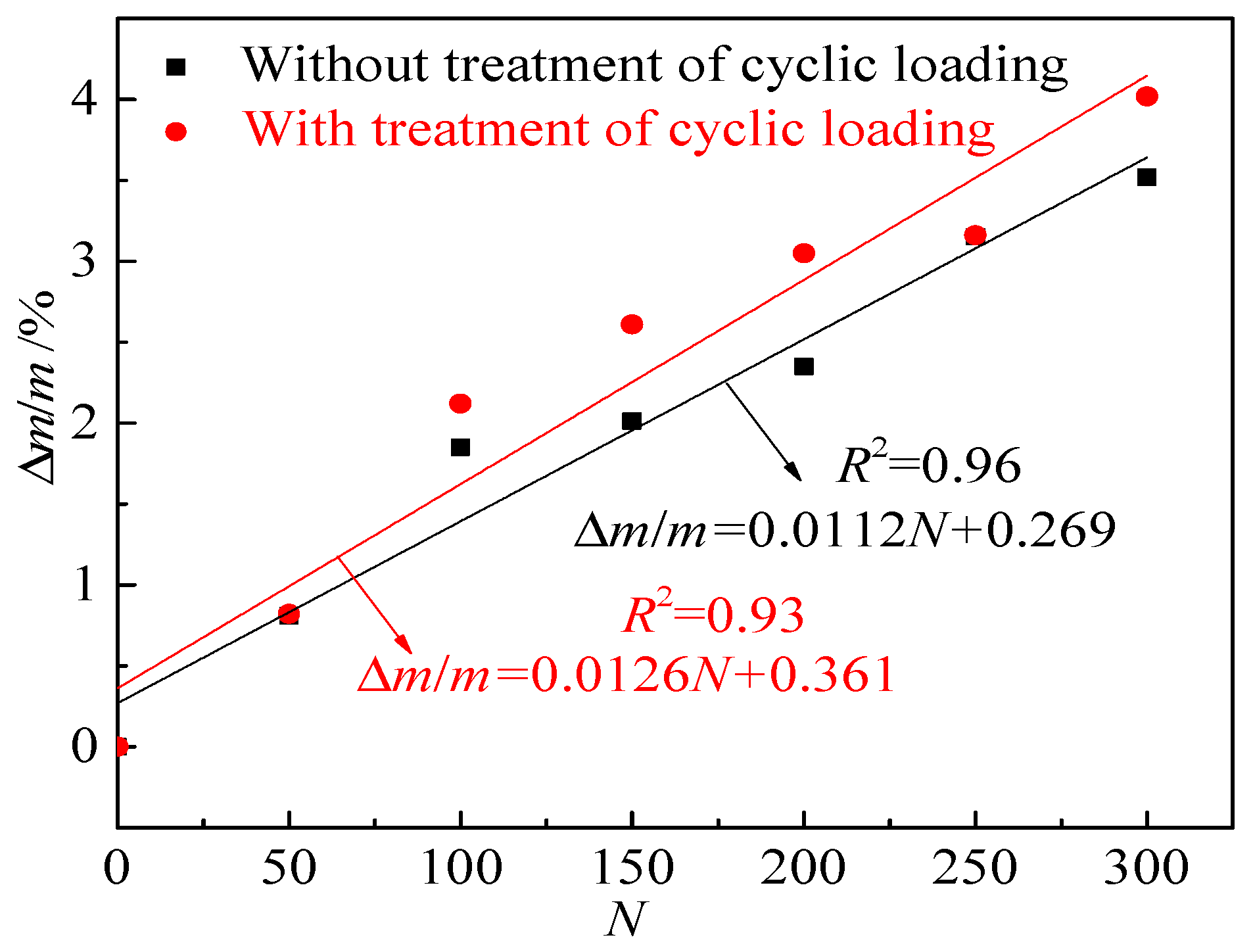
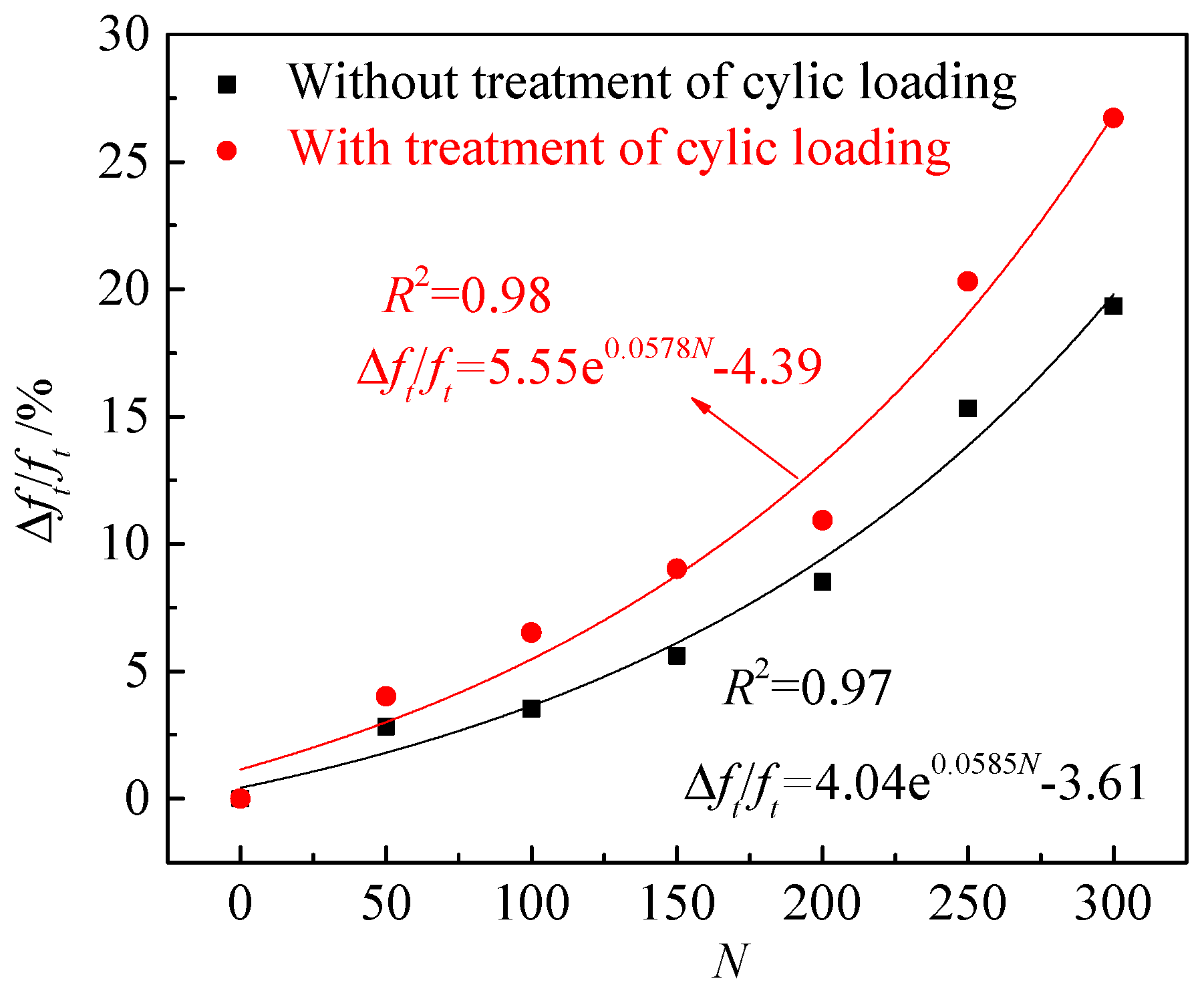
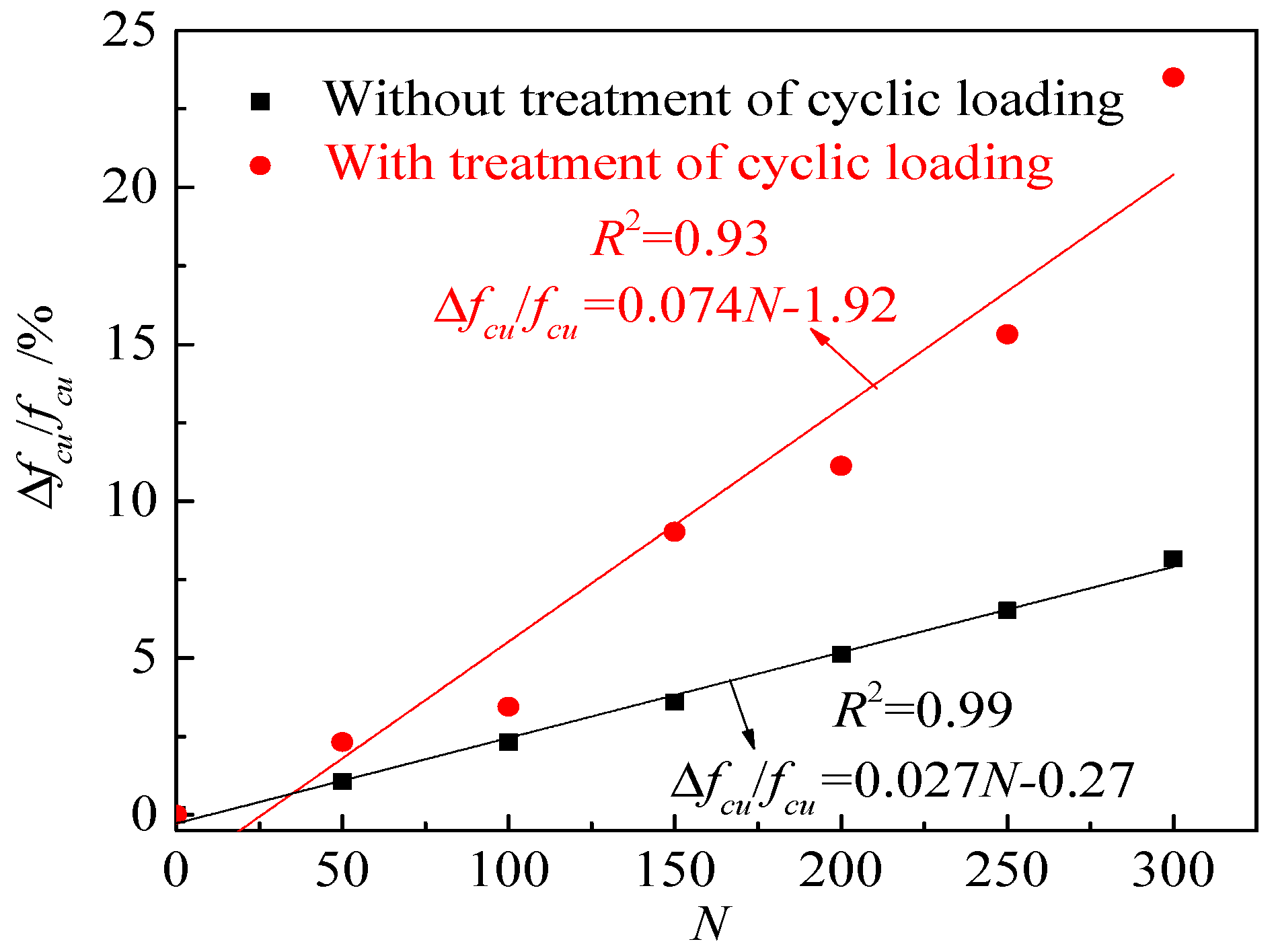
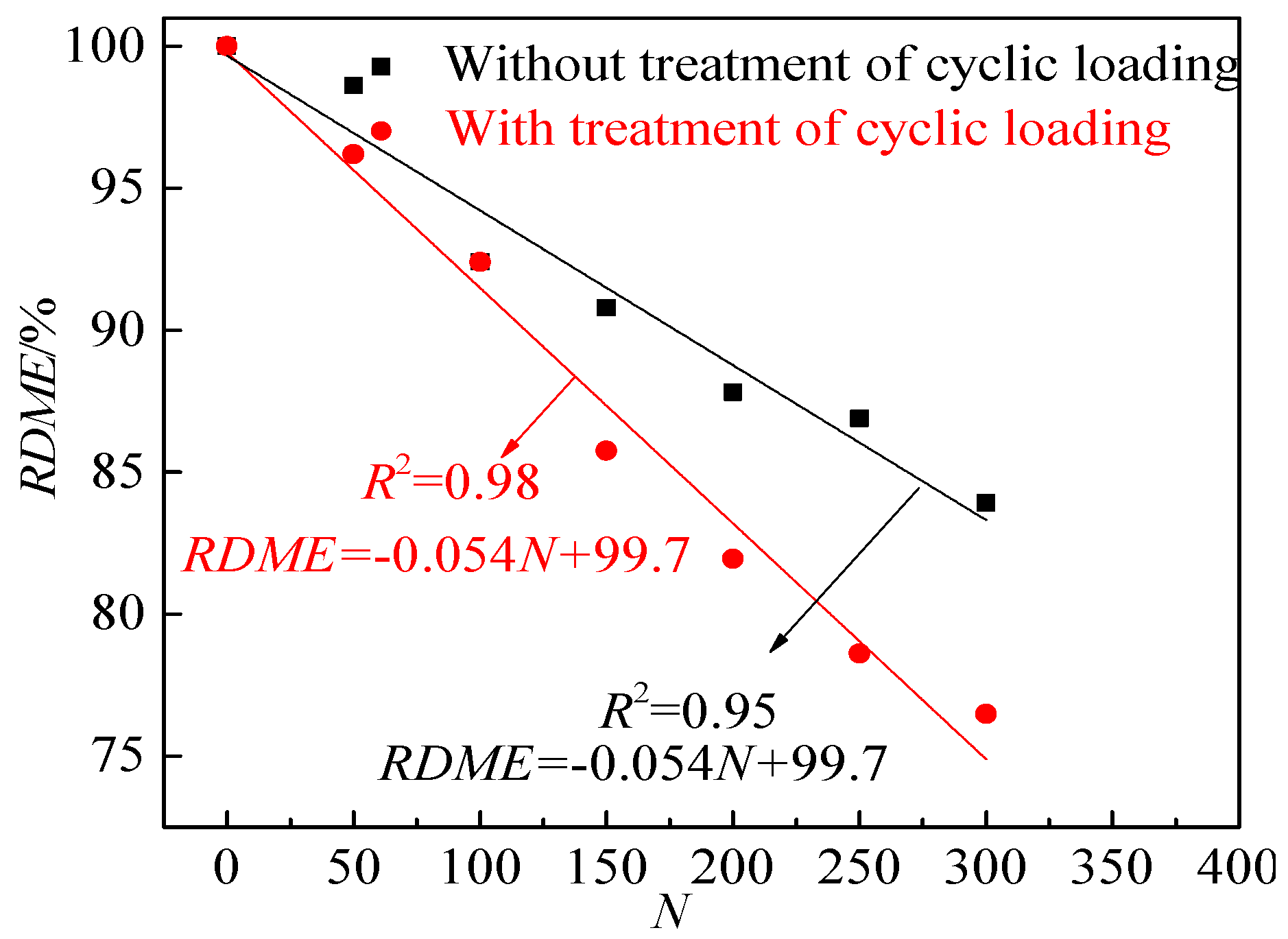
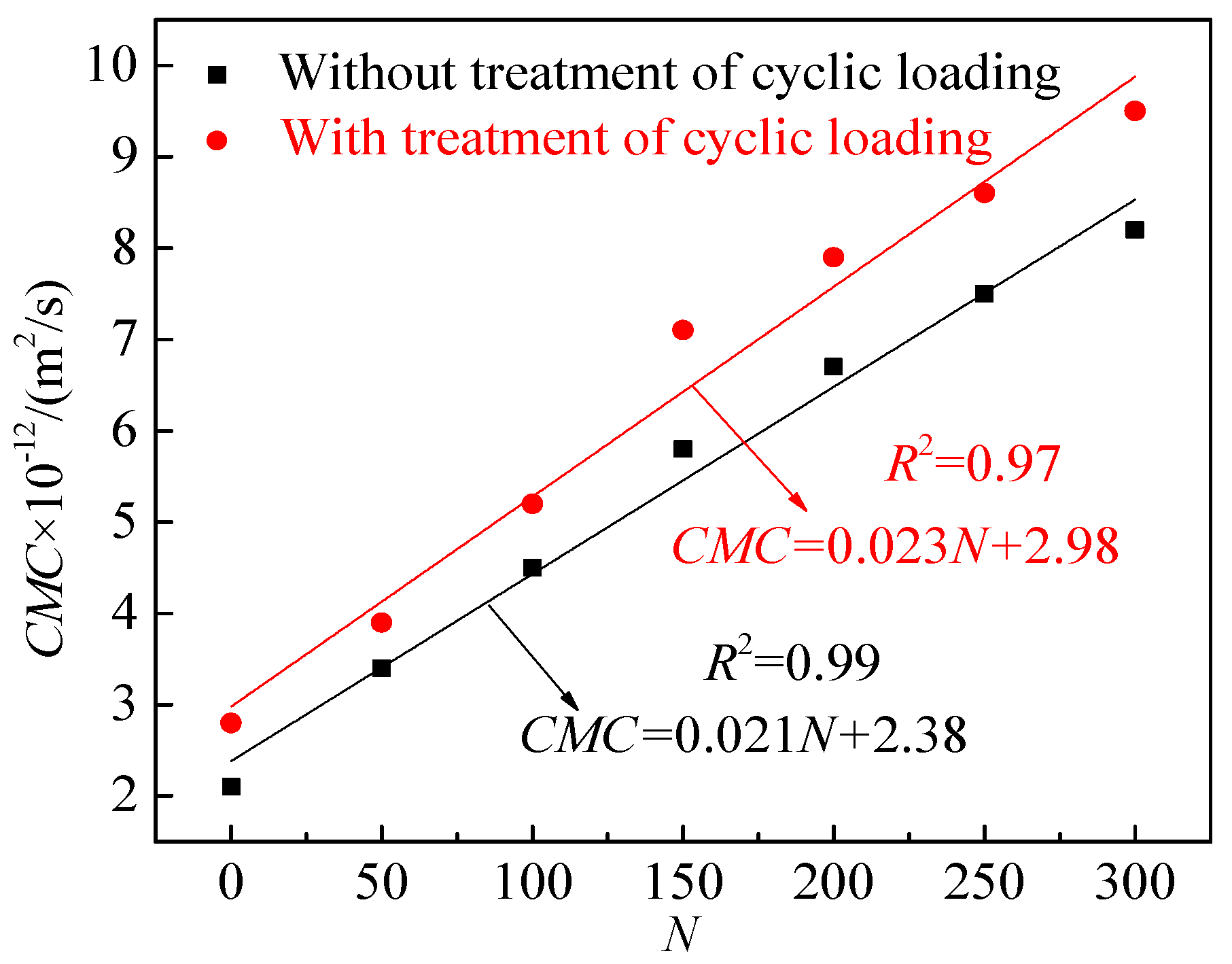
| Particle Size/μm | 0.3 | 0.6 | 1 | 4 | 8 | 64 | 360 | |
|---|---|---|---|---|---|---|---|---|
| Types | ||||||||
| Cement | 0 | 0.33 | 2.66 | 15.01 | 28.77 | 93.59 | 100 | |
| Slag power | 0.025 | 0.1 | 3.51 | 19.63 | 35.01 | 97.9 | 100 | |
| Silica fume | 31.2 | 58.3 | 82.3 | 100 | 100 | 100 | 100 | |
| Types | SiO2 | Al2O3 | Fe2O3 | MgO | CaO | SO3 | Ti2O |
|---|---|---|---|---|---|---|---|
| Cement | 13.95 | 22.46 | 2.67 | 2.92 | 39.39 | 14.34 | 1.66 |
| Slag power | 34.06 | 14.74 | 0.23 | 9.73 | 35.93 | 0.23 | 3.51 |
| Silica fume | 90 | 0.2 | 0.6 | 0.2 | 0.4 | 0 | 7.4 |
Publisher’s Note: MDPI stays neutral with regard to jurisdictional claims in published maps and institutional affiliations. |
© 2020 by the authors. Licensee MDPI, Basel, Switzerland. This article is an open access article distributed under the terms and conditions of the Creative Commons Attribution (CC BY) license (http://creativecommons.org/licenses/by/4.0/).
Share and Cite
Hong, X.; Wang, H.; Shi, F. Influence of NaCl Freeze Thaw Cycles and Cyclic Loading on the Mechanical Performance and Permeability of Sulphoaluminate Cement Reactive Powder Concrete. Coatings 2020, 10, 1227. https://doi.org/10.3390/coatings10121227
Hong X, Wang H, Shi F. Influence of NaCl Freeze Thaw Cycles and Cyclic Loading on the Mechanical Performance and Permeability of Sulphoaluminate Cement Reactive Powder Concrete. Coatings. 2020; 10(12):1227. https://doi.org/10.3390/coatings10121227
Chicago/Turabian StyleHong, Xinghua, Hui Wang, and Feiting Shi. 2020. "Influence of NaCl Freeze Thaw Cycles and Cyclic Loading on the Mechanical Performance and Permeability of Sulphoaluminate Cement Reactive Powder Concrete" Coatings 10, no. 12: 1227. https://doi.org/10.3390/coatings10121227





